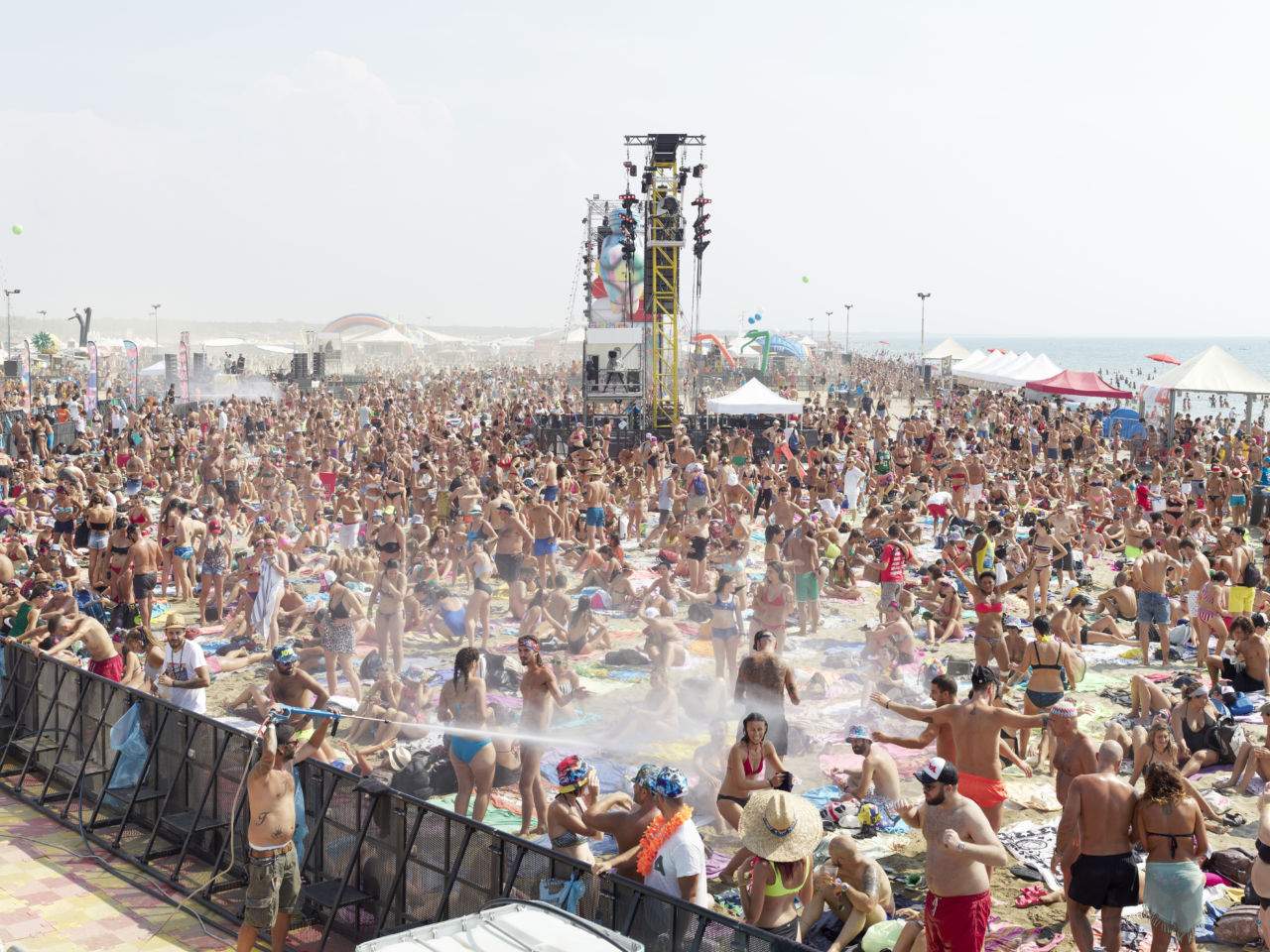Human constellations: the works of Massimo Vitali in an anthological exhibition at the Ettore Fico Museum in Turin
Massimo Vitali (Como, Italy, 1944), is the protagonist of the exhibition Human Constellations, on view from Feb. 26 to July 5 at the Ettore Fico Museum in Turin. Curated by Andrea Busto, Human Const ellations is presented as an anthological exhibition that displays about 30 works selected from the artist’s twenty-five years of production in an exhibition itinerary that is not marked in chronological order.
For those familiar with Vitali’s work, it will be important to find sunny Italian beaches packed with people on vacation (1995), but it will also be a surprise to see, for the first time ever, shots of Jovanotti ’s concerts on his latest Italian tour in 2019.
Massimo Vitali’s work draws aesthetically on the history of art and not just the history of photography. Italian by origin, Anglo-Saxon by training and with an international outlook and attentive to the evolution of avant-garde research at the turn of the last century, the artist appears as a photographer inclined not to leave traces in his works of moments linked to identifiable historical events. His extremely chilled and crystallized world appears as if suspended in a cinematic freeze frame. There are never any details identifiable with current historical facts, except for the titles, which sometimes refer to crowded gatherings or nights of disco fun.
His work appears to be consequential to an “Enlightenment” period, where places are recorded that, beyond their geographical, scenic or atmospheric interest, are immortalized for what they are and “captured” by an eye that is algid and precise in the amount of detail and detail illustrated to the point of paroxysm. Buildings are rendered in all their architectural identity and physicality; mountains are filmed, as impossible as possible, down to the last rock and lichen; beaches and sand dunes, softened by reflections and shadows perceptible to the horizon. Like Canaletto and much of eighteenth-century painting, his eye captures every minute detail and transfers it to photographic paper in a realistic and analytical manner. Atmosphere - to mean the Leonardesque atmosphere of shading and spatial perception of misting in the air of water and dust - is nonexistent in his photographs. Everything is defined. As in Canaletto the figurines then play parts in a chorally written play, the people appear as if directed by an offstage director and obey predefined dictates even if in an obviously unconscious way. Everything is projected onto a screen in which the protagonists play, like instructed actors, parts intended for them by contingent facts. The titles of the works tend to confuse the viewer as if the artist had intended, for the people portrayed, precise parts and leading roles. In works such as De Haan Kiss (2001), in which two boys in the foreground exchange a kiss, or in Cefalù Orange Yellow Blue (2008), where there are colorful bathing suits, it is chance that determines the title of the work decided in post production after a careful review of the photograph.
By contrast, in works such as Carcavelos Pier Paddle (2016), the little boy-who on the left of the work is forever immortalized in his acrobatic dive, echoing the great history of sports imagery, from the diver of the well-known Roman-era fresco at Paestum to Nino Migliori ’s Tuffatore (1951)-don’t give any title to the work, even though he has “full rights” to it. This does not mean, however, that Vitali’s works are d’après but, on the contrary, are originals that continue the history of photography in an innovative and personal way. Vitali’s work is-after more than 30 years of work-that of a great classical author, totally immersed in the history of Italian and international art, which places him among the greatest artists of our time.
Two anthological volumes, published by Steidl, document the artist’s work with reproductions of all the works on display.
For all information you can visit the official website of the Ettore Fico Museum.
Pictured: Massimo Vitali, Jova Beach Party.
 |
| Human constellations: the works of Massimo Vitali in an anthological exhibition at the Ettore Fico Museum in Turin |
Warning: the translation into English of the original Italian article was created using automatic tools. We undertake to review all articles, but we do not guarantee the total absence of inaccuracies in the translation due to the program. You can find the original by clicking on the ITA button. If you find any mistake,please contact us.





























